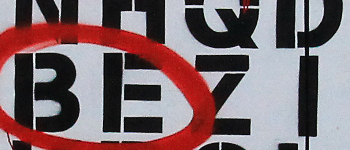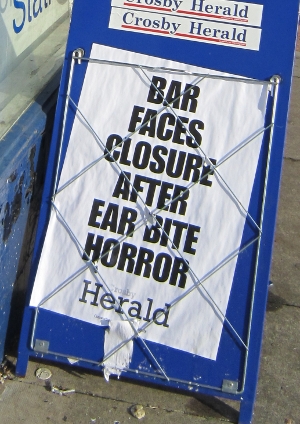
Despite having written a few and studied many more, I don’t think I’ve ever really come to grips with the grammar of the short story. It may be partly due to the fact that the game-changing moment in a story is often to be found or intuited off-stage, in the gaps between what is shown or told. This difficulty is compounded by the ambiguity and understatement that can characterise the modern form.
But there often is a grammar at work, albeit subtly. Many stories, for example, contain a snap that causes the light to change, retrospectively transforming the meaning of everything that led up to this moment of revelation. Even when I see this in action, I’m almost never entirely sure how the change has been made, or even quite what has changed. It’s like watching a three cup trickster at work. You can follow obvious moves along every step of the way but somehow the work that leads to the outcome happens outside of observation. Still, like any sucker, I can’t help but look and look.
So I was pleased to come across Morphologies: Short Story Writers on Short Story Writers edited by Ra Page, and recently too to rediscover the amazing New Yorker short story podcast.
In his introduction to Morphologies, Ra Page recaps an interesting short story typology. He describes three categories: the Epical, the Lyrical and the Artificial.
An Epical short story offers an apparent narrative, which is subverted at the last moment by a revelation. At this point, the apparent narrative is overwritten by a replacing story, as the reader is forced to a re-evaluate everything that came before the epiphany.
The traditional form of this revelation is plot-based (the detective uncovers an unexpected truth). In the modern form it may be character-oriented (the protagonist reveals or discovers an unexpected truth about him or herself).
The traditional form remains common in genre fiction. Science fiction stories also offer a situational variant.. that is, where the reader discovers some truth about the story world that changes the preceding narrative.
By contrast, the Lyrical story focusses on a recurring image. This image or tableau is more than a symbol or, if it is a symbol, it’s a shifting one, its possible meanings changing throughout the story and beyond.
Once established — usually in the first act of the story the image is returned to and reinterpreted as the story progresses. Though fluid in meaning, it remains physically static: unexplained and unresolved, burning in the mind of the reader long after the story has concluded, the way a bright light might burn on the retina after it’s been switched off.
Finally, the Artificial Story embeds a surreal or unexpected element at its start and builds a narrative around it — or possibly builds a narrative despite it. Perhaps the most famous example of this sort is Kafka’s Metamorphosis. More recently George Saunders’ story Semplica-Girl Diaries might be a good example.
This model is also common in science fiction, though it might be argued that literary and genre stories deploy the central artifice in diametrically opposed ways. Science fiction stories sometimes deploy a striking and unexpected element, which is then normalised through explanation. In fact, this process of normalisation can be the substance of the story’s journey — the story is a quest for the secret that ultimately explains the anomaly. The literary story, on the other hand, often refuses to explain. Explaining would undermine the disruption at the heart of the story. The anomaly remains. It echoes onward past the story’s end.
Of course, these categories are far too crude to encapsulate the sheer variety and invention in the short story form. Ra Page goes on to illustrate a range of ways in which stories slip between these boundaries and ways in which the characteristics themselves are often versions of each other (the artificial nugget and the lyrical image significantly overlap, for example). For all that, they may be a good way into thinking about the short story. Just so long as you don’t imagine you’ll find which cup really hides the ball.
photo credit: The dangers of the “Elevated” Track via photopin (license)




